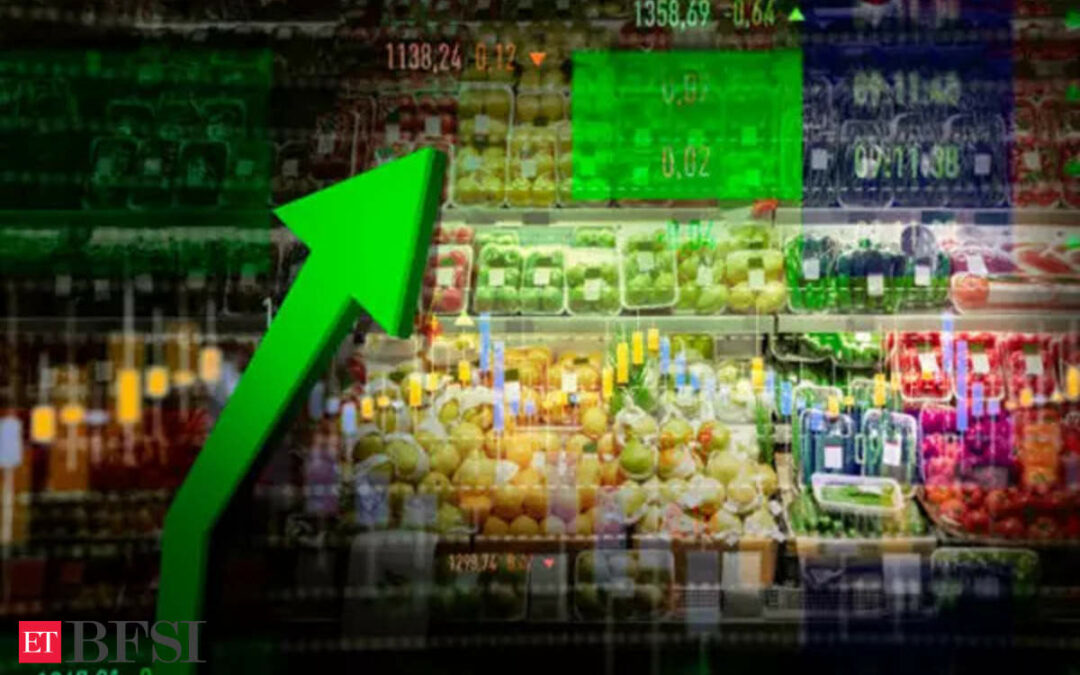One of India’s problems is that, even as it grows richer, it struggles to change policies to match. Economic frameworks designed for when it was a much poorer country constrain and limit growth. This is particularly true of food pricing and monetary policy. Bloomberg News recently reported that officials might restructure how the government measures price increases. That would offer a chance to break out of a growth straitjacket; bureaucratic conservatism shouldn’t cause India to miss this opportunity.
Officials are depressingly hesitant to touch anything to do with food production and prices, since these are particularly sensitive politically. But they’re getting absurdly outdated now. India’s framework of agricultural subsidies, for example, was designed in the 1960s to boost domestic grain production. That may have been appropriate for a postcolonial nation subject to mass famine. But it isn’t right for an industrializing, food-surplus nation that needs stable vegetable prices instead.
Policymakers face a version of this dilemma when it comes to the monetary target. About a decade ago, the Reserve Bank of India was formally mandated to target 4% inflation. Since then, the nation — once subject to major inflation scares — has broadly managed to keep prices under control. That was underlined earlier this week when the consumer price index for July was released, showing that inflation was below the RBI’s target and the lowest it has been since before the pandemic. Understandably, few want to mess with a system that seems to be working.
But they may need to. The government’s chief economist argued in his primary policy document last month that it makes sense for food prices to be cut out of the central bank’s inflation target.
His point was simple but persuasive: Monetary policy cannot fix supply-side problems. It is meant to address short-term problems with aggregate demand. But food prices in India respond to various rigidities in the economy that are all about the supply side. Grain prices depend on how much the government mandates farmers should be paid. Supply chains for vegetables and proteins are fragmentary, and cause prices to oscillate sharply in response to temporary problems of availability and transport. The chief economist’s argument, therefore, makes a certain sense.
The costs of ignoring his reasoning are high. Since it targets an inflation index that includes volatile food prices, the RBI constantly keeps rates higher for longer than it needs to. Core inflation — excluding food and fuel — has been well below the 4% rate for some time. But the central bank hasn’t cut rates, because Indian food prices have been higher than global peers. In recent weeks, food inflation has declined not thanks to any change in policy or demand, but purely because a summer heat wave has abated. Even so, we will likely have to wait a few more months for the central bank to respond. The RBI’s rate-setting panel has met nine straight times now without a cut. Each week that an economy starved of investible funds has to endure a higher-than-necessary real interest rate can be measured in lost profits, growth, and jobs.
The argument against change is equally simple: As long as food prices affect Indians’ expectations of future inflation, they can’t be excluded from the RBI’s calculus. This is essentially what the central bank governor insisted last week. He worries that the RBI’s credibility depends on responding to the overall price level, not just to core inflation. This is true, too.
But the governor also made one fatal, incorrect assumption. And that is that India’s consumer price index, and thus his mandate, fairly weight food prices. In fact, the index — based on surveys conducted in 2011-12 — is overweight food, which comprises 45% of the basket. Like the agricultural policy, its composition reflects the notion that India is barely more than a subsistence economy. With every passing year, that view is more outdated.
India’s CPI does indeed need restructuring, and urgently. Many of the nation’s inflation-targeting peers in the emerging world do better than us. Consider, for example, Indonesia. It has similar problems when it comes to volatile food prices; but, food also has a far lower weight in that country’s CPI. More importantly, that weight is constantly revised to reflect reality; every few years, its statisticians survey actual household consumption in hundreds of towns and cities, and reweight the index accordingly. This, surely, isn’t too much to ask of their counterparts in New Delhi and Mumbai.
If we don’t, then India will continue with a central bank that uses monetary policy to target a price index over half of which it can have no control. Is it any wonder that the RBI is consistently behind the curve?
(Disclaimer: The opinions expressed in this column are that of the writer. The facts and opinions expressed here do not reflect the views of www.economictimes.com.)











